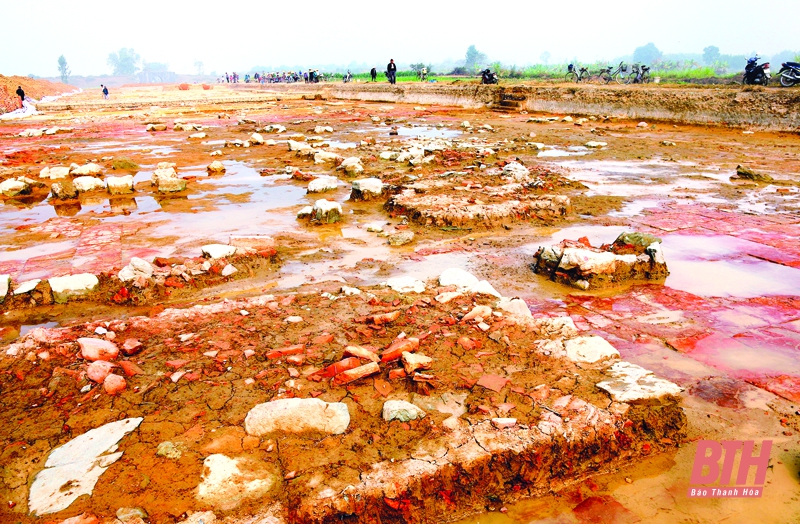
Excavation pit 20.TNH.H1 has revealed the most important architectural vestiges in the central area of the Ho Dynasty capital. Photo: Khoi Nguyen
The Ho Dynasty Citadel “represents an important exchange of Chinese Confucian influences on a symbol of royal power concentrated in the late 14th and early 15th centuries; demonstrates new developments in architectural style in terms of engineering and urban planning in the East and Southeast Asian environment...”. This is one of the characteristics that makes up the outstanding global value of the world cultural heritage; and at the same time, it is an attractive issue for scientists in the process of researching and explaining the mysteries of the citadel’s birth. To gradually clarify the outstanding features of the heritage, in addition to studying the exposed architectural part (4 gates, moats...), archaeological excavations have been revealing the “mysterious world” deep underground.
The overall archaeological excavation project of the Ho Dynasty Citadel Relic Site has a total area of 56,000m2, with a total investment of 87,486,000,000 VND, implemented in the period of 2013-2020. In 2015 and 2016, the Southern Citadel relic with an area of 2,000m2 and the Northern Citadel relic with an area of 3,000m2 were excavated. In addition, before that, the Nam Giao Altar relic and many sites related to the heritage were also excavated, with an area of thousands of m2. As a result, experts and archaeologists discovered thousands of relics, along with many architectural pieces showing the exchange and adaptation of architecture from the Tran, Ho and Le dynasties. Typical examples include brick-paved courtyards, stone pillars, the King's Well... The discovery of relics is also cultural sediment layers, showing the continuity of historical periods and feudal dynasties in Vietnam, of which the Ho Dynasty is an important link.
After a period of suspension due to lack of resources, in 2020, archaeological excavation work at the heritage was re-deployed, with 2 excavation pits of 4,500m2 and 20.TNH.H2 of 3,500m2. Through the excavation process, experts and archaeologists discovered a number of architectural vestiges from the early Le Dynasty (15th century) and the Later Le Dynasty (16th - 17th century), thereby proving the long-term use of the Ho Dynasty Citadel in history. In addition, based on ancient documents and the location of the excavation pit in the King's Base area (pit 20.TNH.H1), a relatively complete architectural complex was revealed, including the main architecture in the center, with 2 gate architectures in front and traces of the surrounding corridor system. From the name King's Nest and the suggested location, scale, and architectural layout, experts believe that this may be the most important architectural vestige in the central area of the Ho Dynasty capital. With the eastern excavation pit (pit 20.TNH.H2), the architectural vestiges of the Ho Dynasty were continued during the early Le Dynasty and the Later Le Dynasty. Thereby, 5 architectural units of the Ho Dynasty were initially identified, with a fairly tight structure including 1 main central architecture with 9 compartments, combined with a number of smaller-scale architectures and a system of surrounding corridor vestiges that were built very standardly and carefully.
In addition to uncovering architectural vestiges, archaeologists also found a large number of relics. Among them, architectural materials are quite rich, diverse in type, material and belonging to many different periods, such as red rectangular bricks, bricks decorated with lemon flowers, chrysanthemums, gerberas, sinuous vine flowers, bricks with Chinese characters printed/engraved, bricks, lotus-shaped tiles, flat tiles and pieces of dragon leaves, dragon decoration pieces... In addition, the types of household utensils are also quite diverse, such as ceramics with white glazed bowls, blue and white flowers, brown glazed, jade glazed; earthenware including cans, jars, some pieces of fired ceramic bags; iron nails; copper coins...
Through the archaeological excavation process (in 2020) and the results obtained, for the first time, experts and archaeologists have relatively clearly identified many architectural relics of many different architectural types of the Ho Dynasty at the Ho Dynasty Citadel. This is considered a new source of valuable historical and cultural documents, contributing to the study of the architecture of the Ho Dynasty Citadel through historical periods in the main hall area and the east of the citadel. At the same time, this is also the basis for research projects to restore architectural vestiges of the Ho Dynasty Citadel in the coming years. As a leading expert who has participated in archaeological excavations at the Ho Dynasty Citadel many times, Associate Professor, Dr. Tong Trung Tin, Chairman of the Vietnam Archaeological Association, said: The initial results from the excavation process have proven the great potential of the underground heritage of the Ho Dynasty Citadel. In the future, if we conduct research step by step, we may be able to gradually restore most of the capital's ground like the World Heritage Site of Nara (Japan). At the same time, the excavation results have also demonstrated and increased the outstanding global values of the heritage, so that the Ho Dynasty Citadel has gradually become a type of relic with relatively comprehensive, unique and valuable overall site traces in Vietnam as well as the region.
The overall archaeological excavation project of the Ho Dynasty Citadel Relic Site is large-scale and requires a large amount of capital. However, the results it brings are also very significant for the conservation and promotion of the value of this world cultural heritage. Therefore, experts believe that Thanh Hoa province needs to urgently reclaim areas in the inner city area, first of all the Royal Road and some central areas, to continue conducting archaeological excavations. At the same time, develop a plan for on-site conservation and exhibition to promote the value of the heritage. Along with that, the province also needs to develop a research plan for the next phase according to the "Master plan for conservation and promotion of the value of the Ho Dynasty Citadel Relic Site and surrounding areas associated with tourism development" approved by the Government.
Source: https://vhds.baothanhhoa.vn/the-gioi-bi-an-trong-long-di-san-thanh-nha-ho-19174.htm


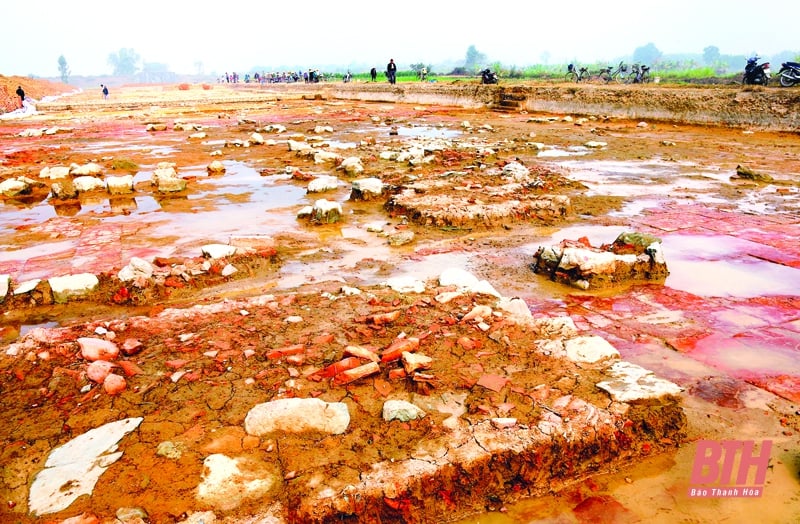
![[Photo] General Secretary attends the parade to celebrate the 80th anniversary of the founding of the Korean Workers' Party](https://vphoto.vietnam.vn/thumb/1200x675/vietnam/resource/IMAGE/2025/10/11/1760150039564_vna-potal-tong-bi-thu-du-le-duyet-binh-ky-niem-80-nam-thanh-lap-dang-lao-dong-trieu-tien-8331994-jpg.webp)


![[Photo] Opening of the World Cultural Festival in Hanoi](https://vphoto.vietnam.vn/thumb/1200x675/vietnam/resource/IMAGE/2025/10/10/1760113426728_ndo_br_lehoi-khaimac-jpg.webp)
![[Photo] Discover unique experiences at the first World Cultural Festival](https://vphoto.vietnam.vn/thumb/1200x675/vietnam/resource/IMAGE/2025/10/11/1760198064937_le-hoi-van-hoa-4199-3623-jpg.webp)





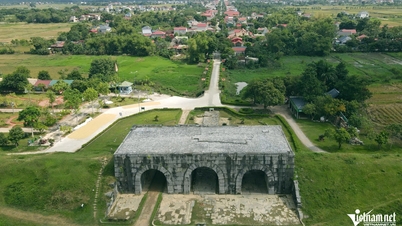

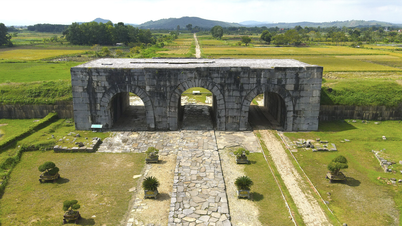

























![[Photo] Ho Chi Minh City is brilliant with flags and flowers on the eve of the 1st Party Congress, term 2025-2030](https://vphoto.vietnam.vn/thumb/1200x675/vietnam/resource/IMAGE/2025/10/10/1760102923219_ndo_br_thiet-ke-chua-co-ten-43-png.webp)

































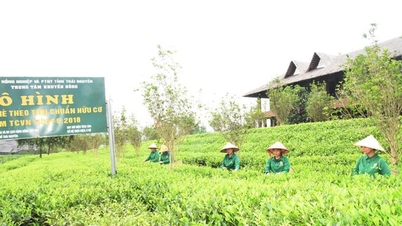



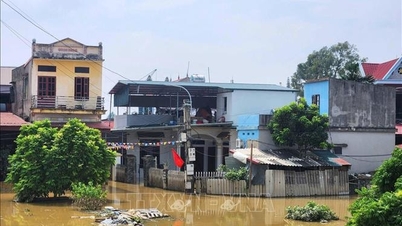
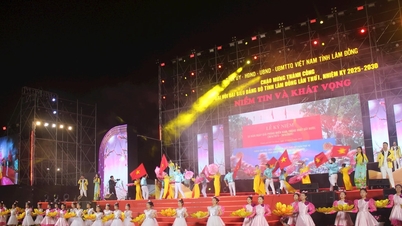






















Comment (0)